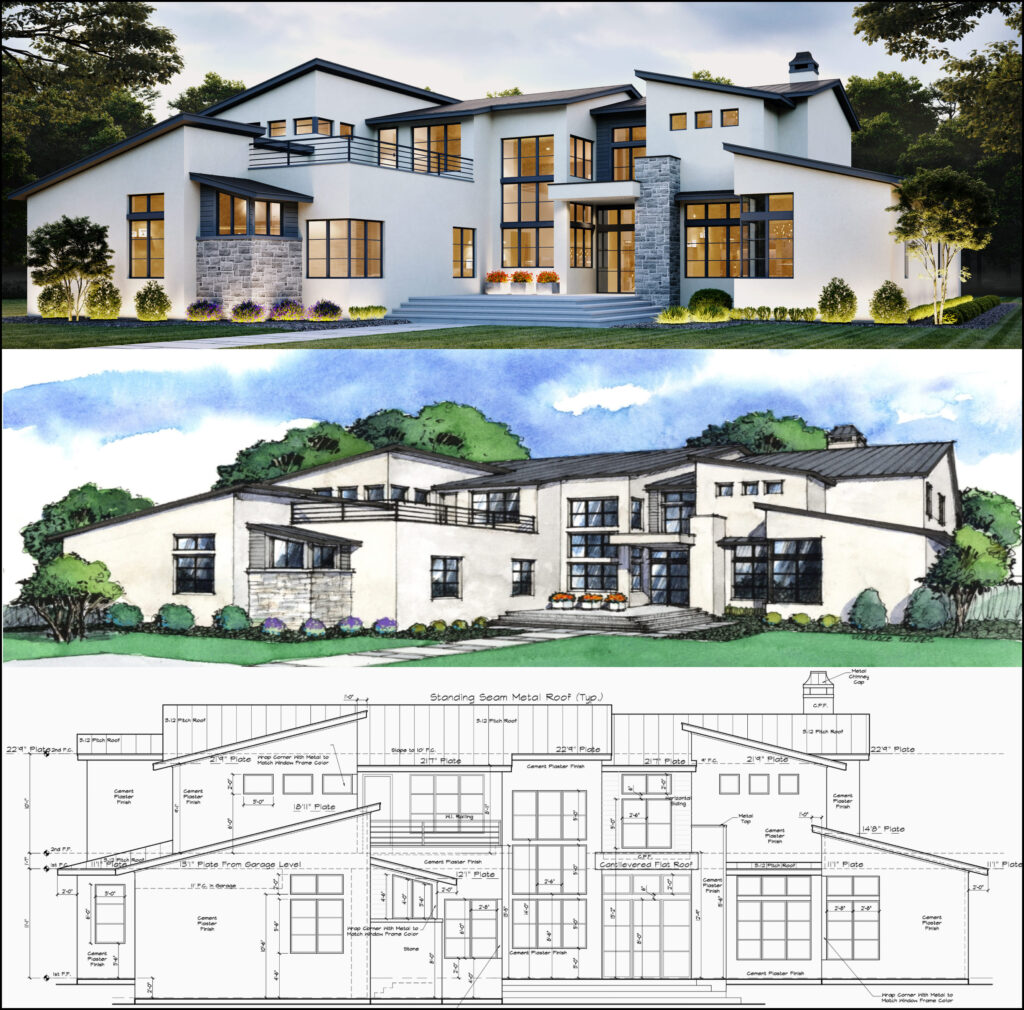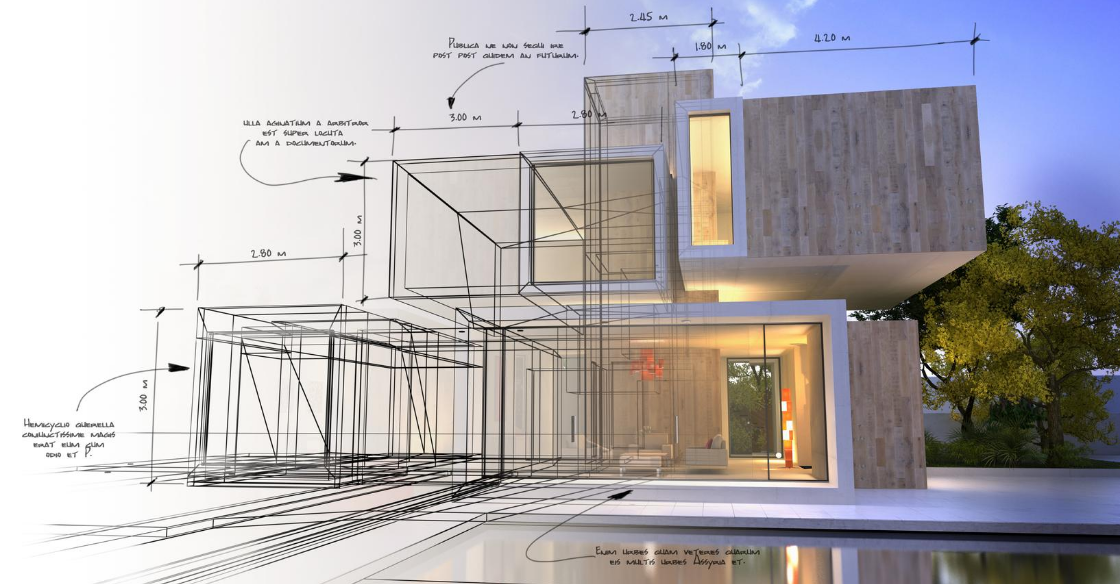Leading Reasons to Pick CDA Architects for Your Residential or Commercial Styles
Leading Reasons to Pick CDA Architects for Your Residential or Commercial Styles
Blog Article
An Extensive Introduction of Architectural Designs and Their Impact on Modern City Preparation and Development
Architectural designs have long offered as a mirror to the social worths and technical innovations of their time, playing a critical function in forming contemporary city preparation and growth. From the magnificence of Neoclassicism to the practical method of Brutalism, each style has presented one-of-a-kind ideas that affect metropolitan aesthetic appeals and functionality.
Historic Review of Building Designs

As cultures transitioned with the Center Ages, Gothic architecture arised, defined by its verticality and intricate outlining, matching the spiritual desires of the period. The Renaissance marked a rebirth of timeless perfects, merging art and style in ingenious manner ins which influenced subsequent styles across Europe.

Today, architectural styles continue to advance, driven by globalization and sustainability concerns, showing a vibrant interaction between heritage and innovation. This historical summary highlights the importance of style as a mirror of societal evolution and as a stimulant for city development.
Secret Architectural Styles Explained
The variety of building designs reflects the myriad influences that shape our developed setting, each personifying unique qualities and social values. Secret building designs include Timeless, Gothic, Baroque, Modernism, and Postmodernism, each representing one-of-a-kind historic contexts and aesthetic ideologies.
Timeless architecture, rooted in ancient Greece and Rome, emphasizes symmetry, percentage, and making use of columns (cda architects). On the other hand, Gothic style, growing in the center Ages, is defined by pointed arches, ribbed vaults, and flying buttresses, creating a heavenly high quality in cathedrals. Baroque style, arising in the 17th century, is noted by majesty, elaborate embellishment, and a dynamic interaction of light and darkness
Modernism, which got momentum in the very early 20th century, prioritizes function over type, using brand-new materials like steel and glass to produce minimalist structures. Postmodernism, reacting versus the austerity of Innovation, embraces eclecticism and historical reference, typically including lively components and paradox.

Effect on Urban Planning
Fit the development of cities, building styles substantially affect city preparation decisions. The option of building style usually dictates the visual appeals, capability, and general character of metropolitan settings. For example, modernism, with its emphasis on minimalism and functionality, motivates open spaces and the combination of technology, shaping city designs that prioritize performance and ease of access. Alternatively, conventional styles might highlight historic conservation, leading to urban styles that keep cultural heritage and promote pedestrian-friendly settings.
Furthermore, building styles can influence zoning laws and land utilize plans. Urban coordinators must consider the dominating building fads when designing areas, ensuring that brand-new advancements harmonize with existing structures. This consideration promotes cohesive metropolitan landscapes and enhances community identity.
The implementation of specific architectural styles can additionally influence socioeconomic elements within a city. As an example, premium modern designs might draw in wealthy locals and companies, bring about gentrification, while more inexpensive real estate services could focus on useful and lasting layouts to accommodate diverse populations. Inevitably, the interplay between building styles and urban preparation creates dynamic cities that mirror both historic context and modern needs, shaping the lived experiences of their occupants
Sustainability and Modern Architecture
Architectural styles play a pivotal duty in resolving contemporary challenges, particularly in the realm of sustainability. As urban locations broaden and ecological concerns escalate, modern style increasingly accepts sustainable style concepts that focus on power efficiency, resource preservation, and marginal Read Full Report environmental impact.
Contemporary building motions, such as biophilic design and environment-friendly design, advocate for structures that integrate with their environments, using natural products and promoting biodiversity. These styles frequently integrate renewable resource resources, such as photovoltaic panels and wind turbines, to decrease reliance on fossil gas and lower carbon impacts.
In addition, the assimilation of innovative technologies, such as clever structure systems, boosts energy monitoring, maximizing source use while guaranteeing occupant comfort. Cutting-edge water management techniques, consisting of rainwater harvesting and greywater recycling, more contribute to sustainable city environments.
Especially, sustainability expands beyond environmental worries; it includes social and financial measurements. By promoting neighborhood wellness and advertising inclusivity, modern-day architectural styles straighten with sustainable advancement objectives. As a result, the advancement of architectural practices remains to form durable cities that not only meet the needs of the existing yet also protect the future for generations ahead.
Neighborhood Involvement in Layout
Area involvement in layout serves as a crucial bridge in between designers and the populaces they offer, making sure that the constructed atmosphere mirrors the requirements and goals of its customers. This collective click here now process invites neighborhood members to contribute their insights and choices, cultivating a sense of possession and duty towards the areas they populate.
Effective community involvement utilizes numerous approaches, such as workshops, studies, and public online forums, to gather varied point of views. These strategies facilitate a two-way discussion, allowing designers to understand regional contexts while equipping homeowners to articulate their concerns and needs. This inclusivity not just enhances the style high quality yet additionally advertises social equity by addressing the special difficulties dealt with by marginalized groups.
In addition, area involvement can result in innovative solutions that may not emerge in a conventional layout process. By integrating regional knowledge and cultural worths, designers can produce areas that reverberate more deeply with individuals, improving functionality and sustainability. Inevitably, focusing on neighborhood interaction in design processes causes environments that support social interactions, assistance health, and enhance neighborhood connections, thereby playing a pivotal function fit modern metropolitan landscapes.
Conclusion
Building styles have actually greatly affected contemporary city preparation and top article advancement, reflecting progressing cultural and technological contexts. The combination of historic visual appeals with modern demands fosters city environments that prioritize sustainability and neighborhood interaction. As cities continue to grow and adapt, the recurring discussion in between architectural heritage and contemporary style concepts will remain crucial in developing comprehensive, vibrant areas that enhance high quality of life and advertise social equity. The future of urban development rest on this harmonious balance.
Report this page